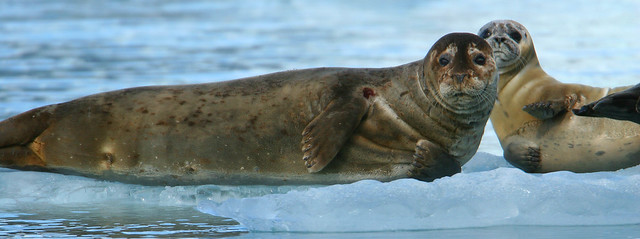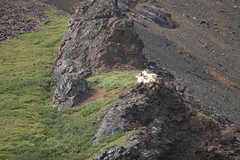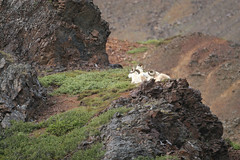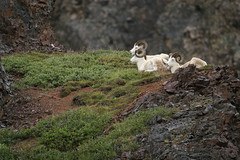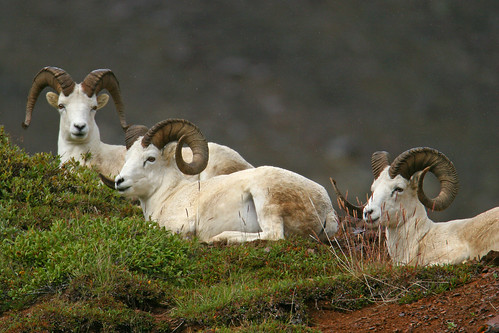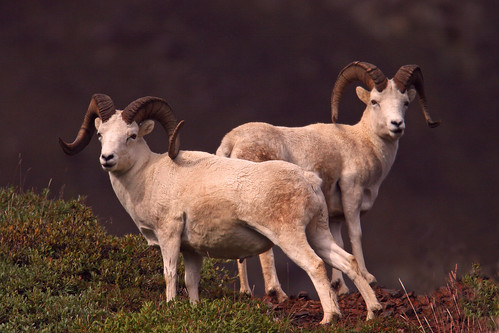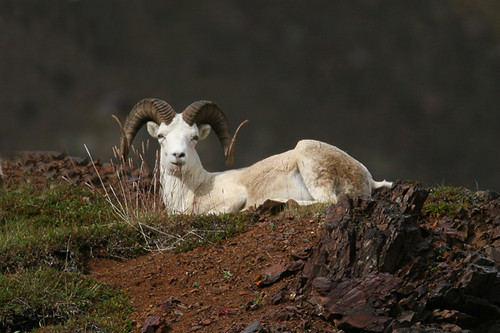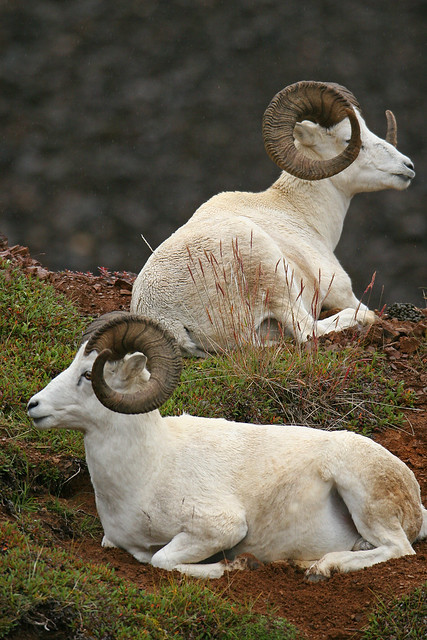Some time ago I had the chance to go to Alaska for two weeks to film my TV show called “Outdoor Photo Adventures”. You can't imagine how excited I was to be there. One of the highlights of the trip was the time that we spent in Denali National Park. It is a beautiful place, to be sure, but I was mostly interested in the wildlife.
For as long as I can remember I have studied wildlife. First as a hobby and now as part of my quest to be a better photographer. I have spent a lot of hours reading, hoping that someday I would get the chance to see and photograph animals such as the ones that I saw on the trip. You can then imagine how excited I was as we drove our rented RV into the Toklat River ranger station and found a small band of Dall Sheep resting on the side of the mountain.

Dall sheep are very impressive animals. They are typically white in color although there are darker color phases as well. They live in the tundra areas of Northern Canada and into Alaska. The males have massive curling horns that they put to good use during the mating season or rut that occurs in late November and early December. During this period the rams will square off and butt heads violently in order to gain the right to mate with the local ewes. They tend to hang out in areas where they have a combination of open alpine ridges, meadows for feeding and rough rocky pinnacles where they can seek shelter from wolves or grizzly bears that may desire sheep to eat. Like other wild sheep such as the bighorn found in the lower 48, they are extremely adept at scaling cliffs and negotiating rugged rocky spires where no predator can hope to follow. Even the lambs can run along rocky cliffs and seem to defy gravity as they execute moves that would make the most experienced rock climber shudder with fear. Padded hooves help them to some extent but I think they are magic as well.
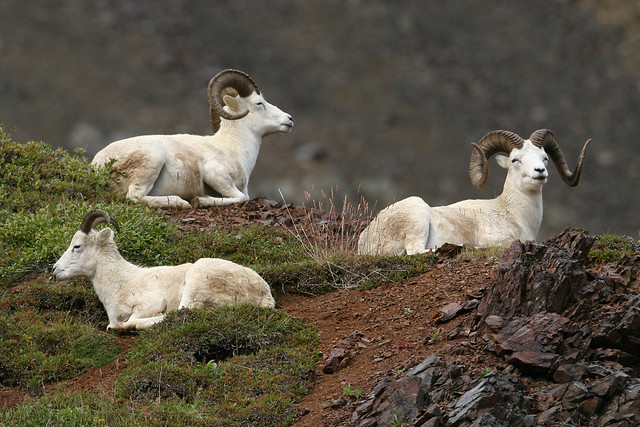
That is a little sheep natural history. Now back to my story.
The sheep that we spotted at Toklat were not obvious at first. We got out to stretch our legs a little and look around. As I looked up on the tundra slopes of the mountain nearby, I spotted what at first appeared to be a white speck of late snow at about 1 mile distant and about 1000 feet in elevation gain from where we were. I had a 600 mm lens attached to my Canon 20D for a focal length of 960 mm or about 19.2x magnification. With that kind of power I could barely make them out as sheep. We had a 1.5 mile hike in front of us lugging heavy still camera and video equipment but we were so excited that no one even questioned if we would make the effort or not. So we started up the mountain.
Our party consisted of my videographer and director Dan Blust, his girlfriend, Juliana, Alex Chamberlain my son and our assistant and myself. After we had covered the first half mile or so I paused to take the first photo.
Now, ordinarily, I would choose an indirect rout when trying to get close to a wild animal. This time however, we had no choice but to move straight up the hill, in full view of the sheep all the time. I was afraid that we would spook the sheep so I stopped every few minutes to photograph them.
I was pleased to find that they didn't spook easily. Much like other wild sheep and goats, they were very confident in their ability to escape these clumsy climbers if they needed to and were content to just continue resting while we worked our way closer. After an hour or so, we moved to within 150 feet of the sheep and were able to get some very nice shots.
What a great experience it was to be in Alaska and have the chance to see and photograph animals like Dall sheep. Now every time I see one of these photos I remember that trip and the great time we had in quest of some photographs of these magnificent animals.
I hope you enjoy these photos and the narrative. Let me know if you do by leaving a comment.
